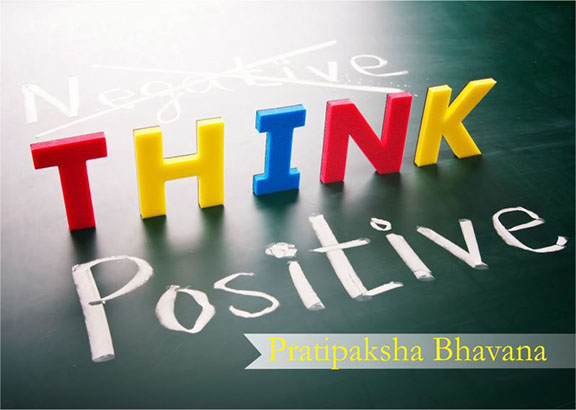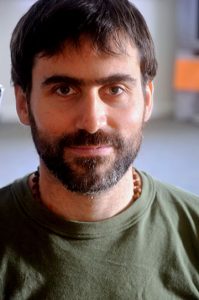 “Yit’gadal v’yit’kadash sh’mei raba . . .” As I realized that these words of the Mourner’s Kaddish were coming out of my mouth, my head dropped, my eyes closed and I heard wails of grief come from both me and my family. I could no longer say the words. I was sixteen years old and my father had just passed away.
“Yit’gadal v’yit’kadash sh’mei raba . . .” As I realized that these words of the Mourner’s Kaddish were coming out of my mouth, my head dropped, my eyes closed and I heard wails of grief come from both me and my family. I could no longer say the words. I was sixteen years old and my father had just passed away.
Exalted and sanctified is the great name (Amen) of the divine in the world, which has been created according to divine will, and may G-d establish a divine kingdom in your lifetime and during your days, and within the life of the entire House of Israel, speedily and soon; and say, Amen. (Amen. May G-d’s great name be blessed forever and to
all eternity.)
For the first time in my life, the words of this prayer, familiar to me from prayer services, carried a heaviness I had never experienced. The sensation of saying them for my father, as I walked behind his casket, was a surreal experience—I felt like I was completely separate from my words, my body and my emotions. I felt as though I was a witness to the whole nightmarish, bitter scene; implausible, yet it was happening. I was consumed with the fear of how my world was changed forever.
May G-d’s great Name be blessed forever and for all eternity.
The Mourners’ Kaddish, or the Kaddish Yatom, (literally the “Orphan’s Sanctification” in Hebrew) is said at the funeral of a parent, spouse, or child and is repeated at least three times a day following the burial during the period of mourning known as Shiva. Traditionally, ten Jews gather at a bereaved family’s home to provide support and to recite the prayer for seven days after a funeral. A Jewish person who has lost a relative often recites the Kaddish once daily during the next 11 months, a time of mourning and every year on the anniversary of the death.
Blessed and praised, glorified and exalted, extolled and honored, elevated and lauded be the Name of the Holy One, blessed be the One, (blessed be the One) beyond all the blessings and hymns, praises and consolations that are spoken in the world; and say, Amen. (Amen.)
Even though the tradition is to sit shiva, to be in formal mourning, for seven days following the loss of a loved one, my family did not follow this practice. My grief and anger at my father’s death was not assuaged or supported or made more tolerable by any kind of spiritual practice. In fact, I told my family that I was angry at G-d for having taken my father away and I moved far away from Judaism.
May there be great peace from heaven, and life, for us and for all Israel; and say, Amen.
I have heard Swami Satchidananda (Sri Gurudev) say that, when you practice Yoga, you connect with the religion of your family more deeply because Yoga is the essence of all religions. I have also heard stories of young Israelis who have traveled to India; when they receive darshan from a Guru (blessings from a Master), they are told to return to their own Jewish tradition, which is a deep Bhakti Yoga (devotion from the heart) practice. Many ask their parents to send their tefillin (prayer boxes worn on the arm and head) to them in India so that they can begin to connect, or reconnect, with the spiritual practices of Judaism. That is similar to my experience: After being introduced to Yoga, and the teachings of Sri Gurudev, I felt pulled back to Judaism.
As my Yoga practice became regular and my spiritual practice began to deepen, I became more aware of my personal connection with the spiritual practices of the generations before me. Like the Israeli travelers in India, I turned to Jewish practices and to the traditions in which I had grown up. I felt a longing to reconnect to practices I had become unacquainted with in the previous fifteen years. I even started using tefillin just as I was about to move to Yogaville in 2008.
Today, my spiritual practice is enriched by the ways Judaism and Yoga reflect each other and strengthen my connection to a deeper sense of personal spirituality. Before my understanding of Yoga deepened, I felt like Yoga and Judaism had to be separate practices, but now I see how they are spiritually connected. As the Integral Yoga organization’s slogan says, “Truth is One, paths are many.” By having both practices in my life, the slogan became experience, not simply words.
Let me give you some examples. I am dependent upon a wheelchair and in early 2011, I traveled to San Francisco to participate in the Accessible Yoga Teacher Training (AYTT) offered by IYISF. While the AYTT was “accessible,” the Integral Yoga Institute (IYI) building in San Francisco was not, so I found myself living outside of Integral Yoga ashrams for the first time in two and half years. Without my regular routine with the Integral Yoga sangha, I gravitated to sangha (kehilla in Hebrew, community in English) at several synagogues in San Francisco. My sadhana (spiritual practice) changed from meditating three times a day and practicing Hatha Yoga daily at IYI in New York, to attending Jewish morning-prayer services two to five times a week, afternoon prayer services two to four times a week and Shabbat services every Saturday morning. Simultaneously, my Hatha practice continued to grow and evolve during the teacher training classes. I also attended satsang at Sivananda Yoga Vedanta Center (our spiritual cousins, as founder Swami Vishnu Devanandaji and Sri Gurudev are both disciples of Sri Swami Sivananda) and have attended gatherings at the IYI in San Francisco (with help up the stairs).
But returning to the story of my father’s funeral: Where or how does the Mourner’s Kaddish fit into Yoga? Well, after becoming an observant Jew in the last seven years, I began to notice that nowhere in the entire prayer is there mention of death, mourning, grief or loss. Reciting these familiar words of sanctification anchors the mind, reminding us that within the holiness of G-d’s will, we, as souls inhabiting bodies, have no control over when a soul comes to or leaves the body. Just the fact we are given a body for these experiences is a gift and a blessing and something to be grateful for even in our deepest sorrow.
In fact, in many ways the Kaddish is a mantra. Repeated often and with the support of your community present, saying Kaddish is a form of japa (mantra repetition) during a time of deep confusion and loss. Hebrew, like Sanskrit, is a deeply vibrational language, so saying the Mourner’s Kaddish is japa that bridges the gap of mourning, helping us move from deep sadness, grief and loss, towards finding acceptance.
These connections actually crystallized for me one Friday night in San Francisco at a Shabbat dinner at a rabbi’s house. That night, a festive meal was served to celebrate the Sabbath, and the group discussed the week’s Torah portion and other questions pertaining to the Sabbath and Judaism in general (Sound like satsang? It is!). At one point, a friend asked, “Why do you think we say the Kaddish so often during the mourning period?”
It dawned on me that my Yoga practice and my Jewish practice were in complete agreement here. In the Yoga Sutras, Book 2, sutra 33, the concept of pratipaksha bhavana is revealed; it tells us to replace negative thoughts with positive thoughts. When you lose a loved one such as a parent, a spouse or a child, the grief and trauma is so great that it can totally separate you from your self and your emotions, and make you feel as if you have totally lost control, just as I experienced that gray, rainy, September day in 1987.
Jews recite the Mourner’s Kaddish at these most difficult times in life, immediately after the death of a loved one and at the times of year when we remember that person’s passing. But the prayer doesn’t allow us to dwell on our grief and sorrow. Instead, saying the prayer three times a day focuses your mind on blessings and gratitude. The Yoga Sutras Book 1, sutra 2, “Yogas chitta vritti nirodha,” tells us that Yoga is the quieting of the mind waves; likewise, saying Kaddish regularly during periods of mourning quiets our waves of sorrow to an emotional and peaceful acceptance that it is the Holiness of G-d who gives us our life. In this peace, we can seek gratitude for all of our experiences while individually and collectively acknowledging our grief.
With two complementary but different sadhanas (“Sadhanot,” for the Hebrew speakers in the audience!) in my life I’m a pretty busy guy. But life has an easier, gentler flow when both Hebrew prayers and Sanskrit mantras occupy my mind. Daily preoccupations and the mundane worries of my existence are easier to handle, and Judaism and Yoga make times of sadness or loss more bearable. And for me, the two sadhanas have enabled me to deeply connect with strong, supportive kehillot/sangha on both the East and West Coasts of America.
 Reverend Sam Rudra Swartz was introduced to Integral Yoga and the teachings of Sri Swami Satchidananda while serving tables as a waiter in a New York City bar in 2001. Since that time he has been active in the Integral Yoga organization, living at Yogaville and the Integral Yoga Institute of New York. He completed Accessible Yoga Teacher Training offered through Integral Yoga Institute in San Francisco. Rudra graduated from Boston University’s College of Fine Arts and is an active musician. He is also a graduate of the All-Faiths Seminary in New York, where he received ordination from the late Rabbi Joseph Gelberman as an interfaith minister.
Reverend Sam Rudra Swartz was introduced to Integral Yoga and the teachings of Sri Swami Satchidananda while serving tables as a waiter in a New York City bar in 2001. Since that time he has been active in the Integral Yoga organization, living at Yogaville and the Integral Yoga Institute of New York. He completed Accessible Yoga Teacher Training offered through Integral Yoga Institute in San Francisco. Rudra graduated from Boston University’s College of Fine Arts and is an active musician. He is also a graduate of the All-Faiths Seminary in New York, where he received ordination from the late Rabbi Joseph Gelberman as an interfaith minister.

